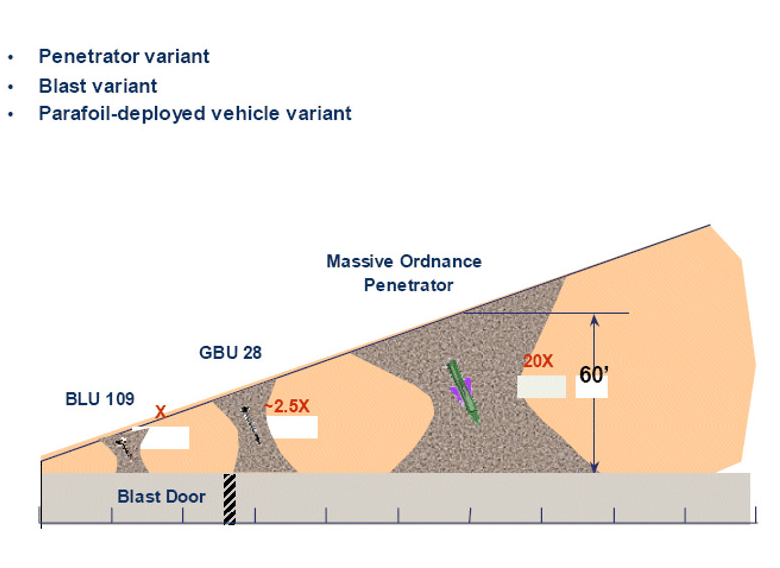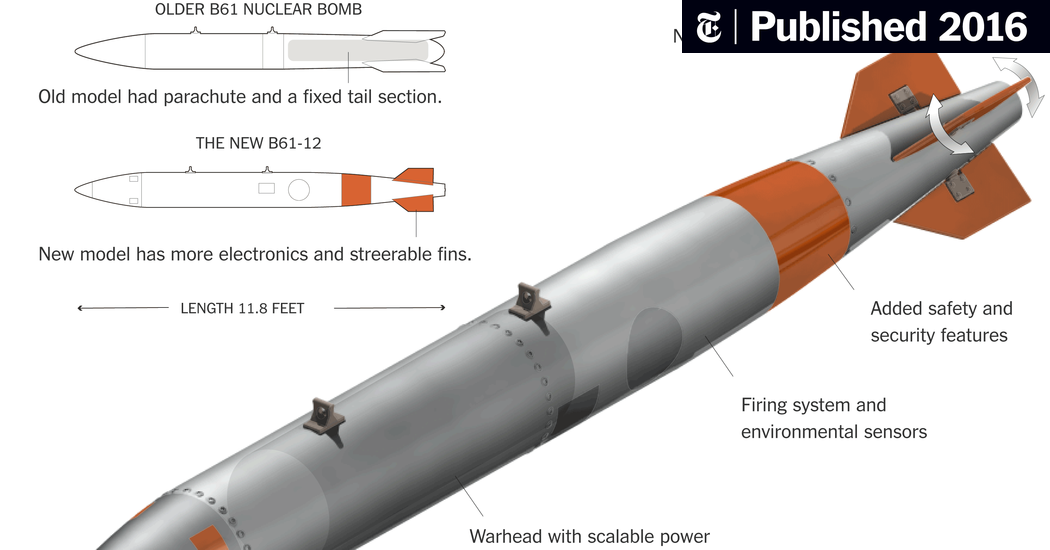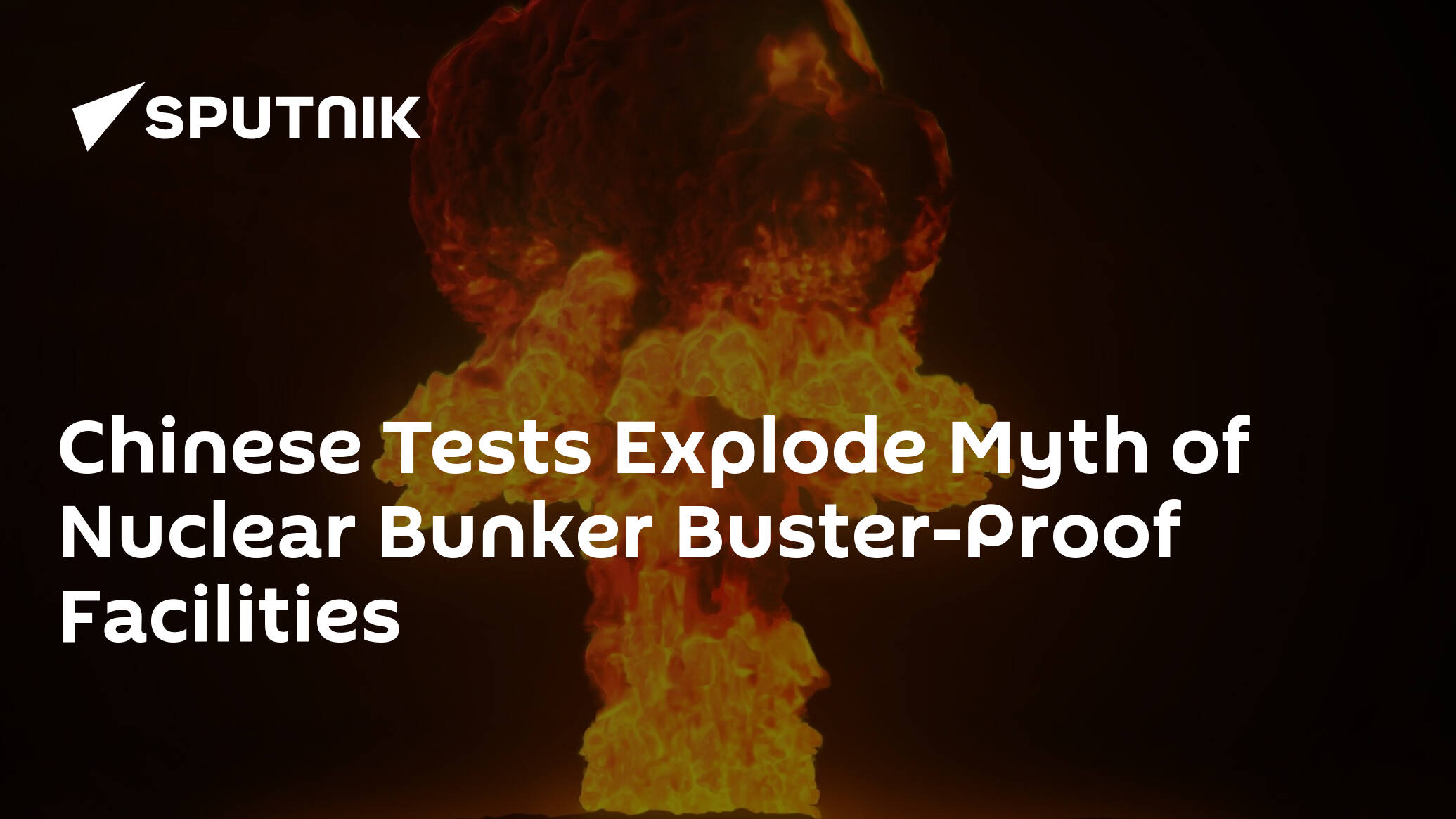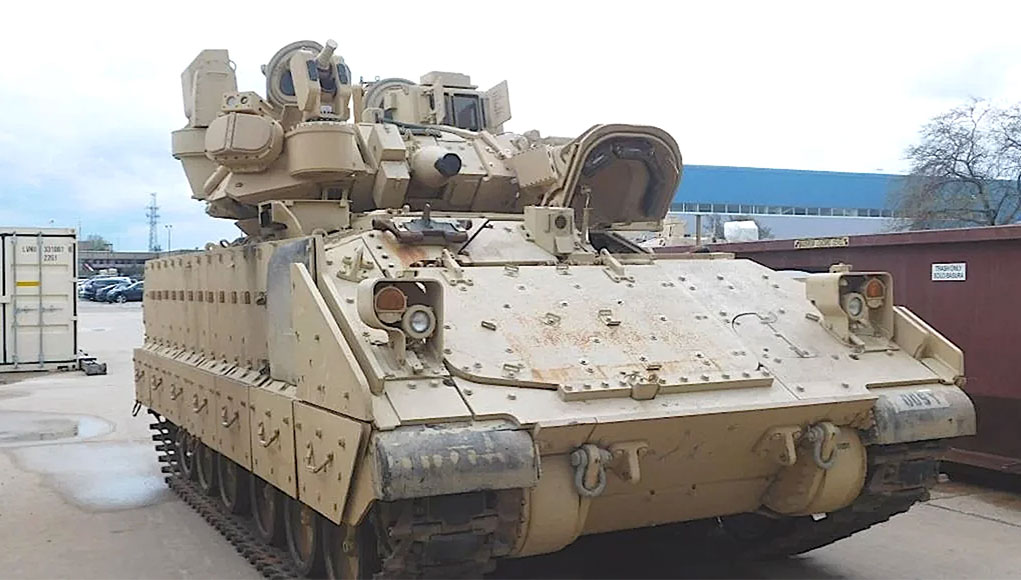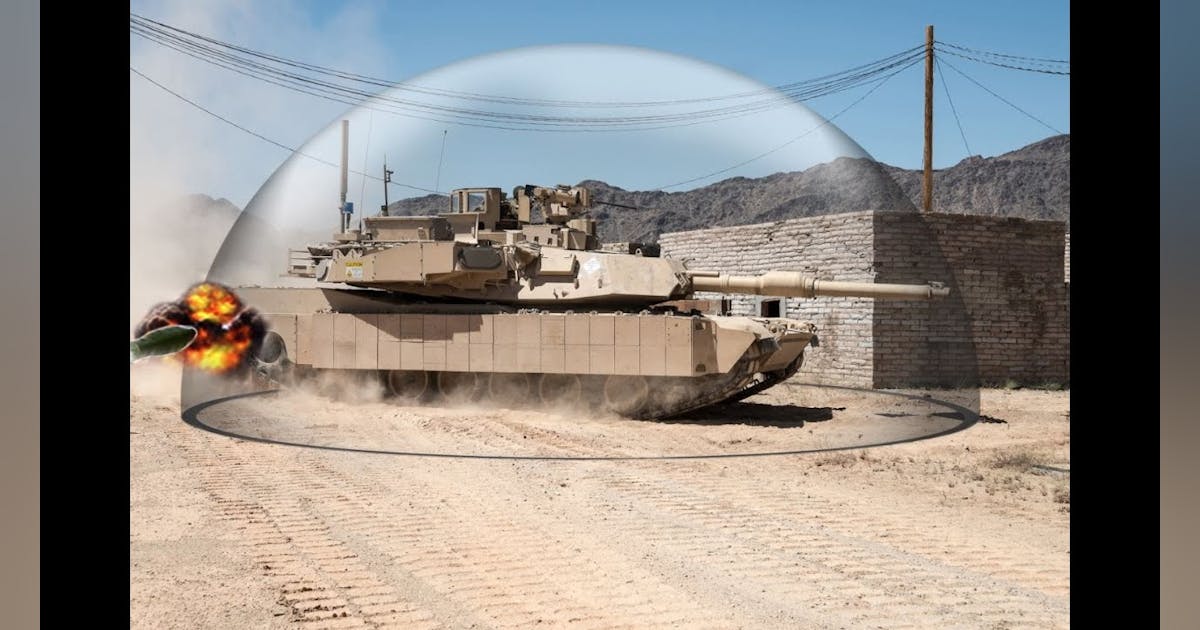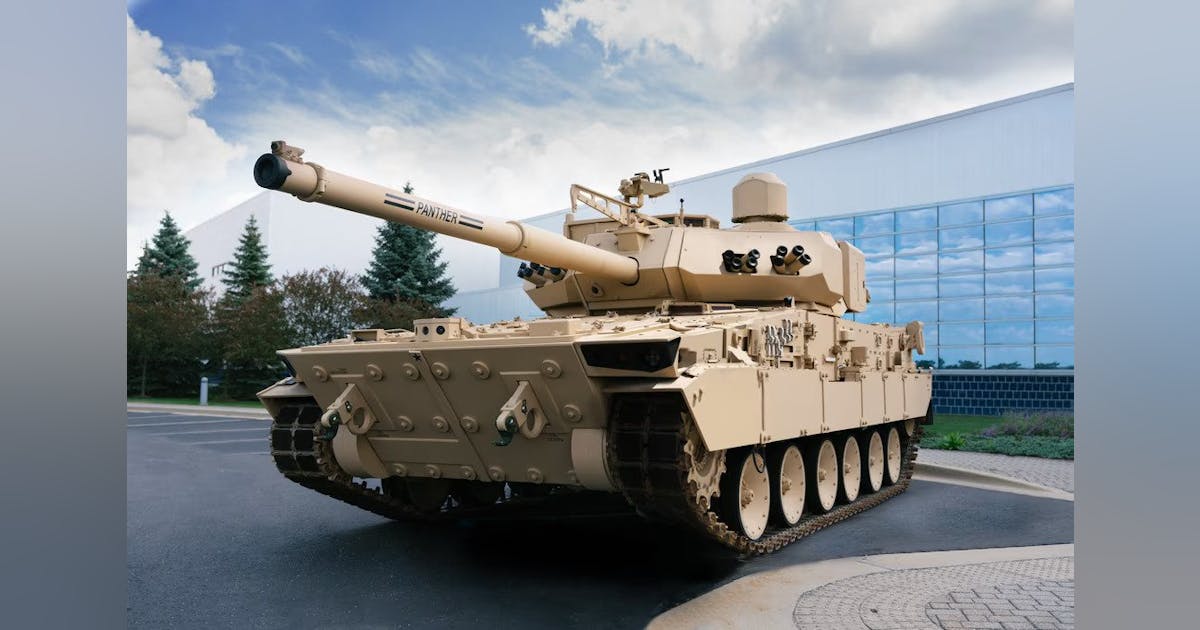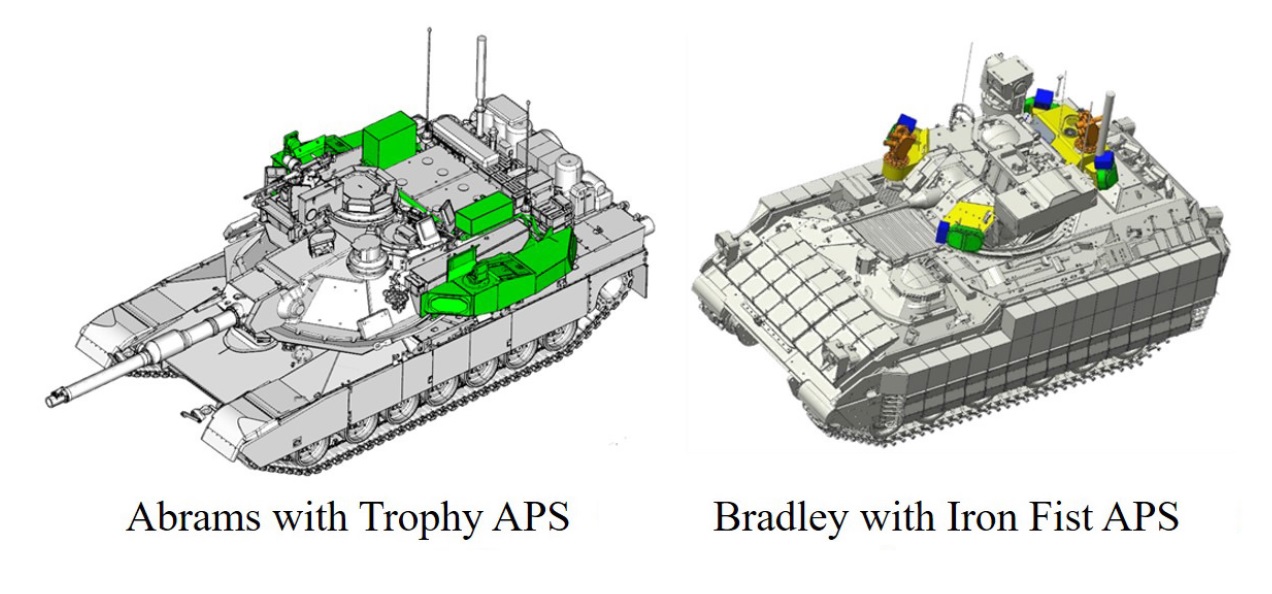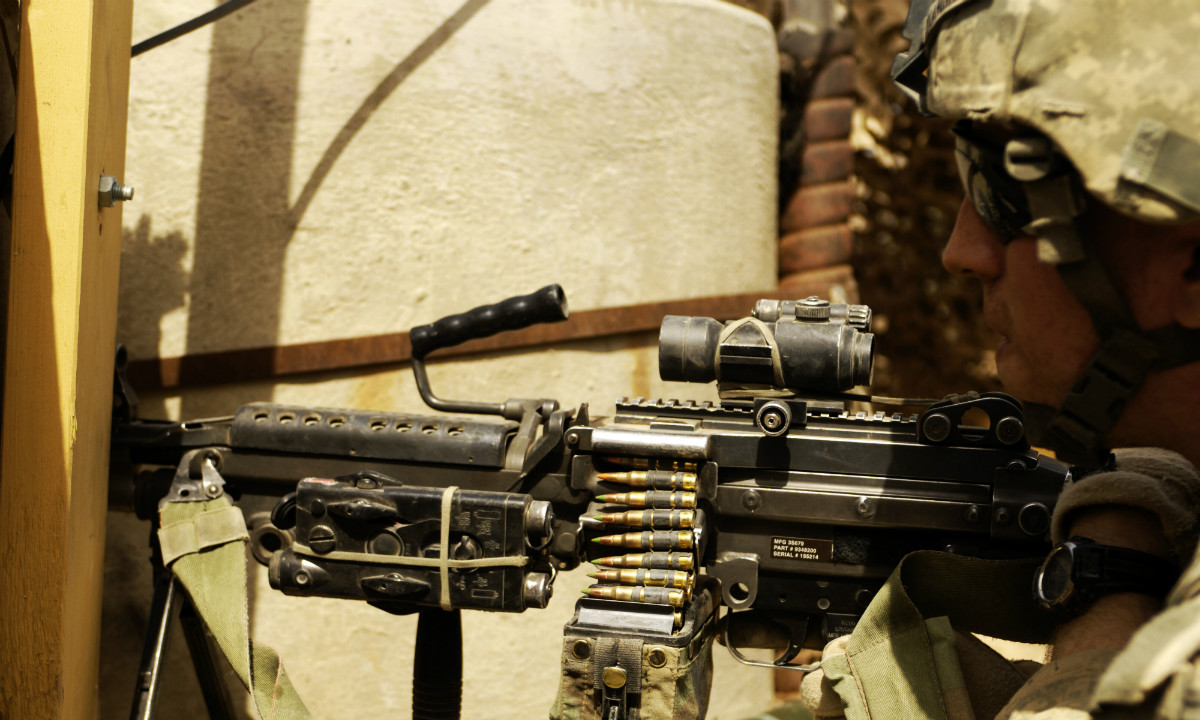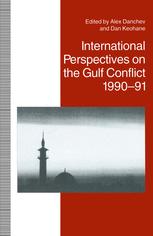An Iranian nuclear facility is so deep underground that US airstrikes likely couldn’t reach it
By JON GAMBRELL May 22, 2023 GMT
https://apnews.com/article/iran-nuclear-natanz-uranium-enrichment-underground-project-04dae673fc937af04e62b65dd78db2e0
DUBAI, United Arab Emirates (AP) — Near a peak of the Zagros Mountains in central Iran, workers are building a nuclear facility so deep in the earth that it is likely beyond the range of a last-ditch U.S. weapon designed to destroy such sites, according to experts and satellite imagery analyzed by The Associated Press.
The photos and videos from Planet Labs PBC show Iran has been digging tunnels in the mountain near the Natanz nuclear site, which has come under repeated sabotage attacks amid Tehran’s standoff with the West over its atomic program.
With Iran now producing uranium close to weapons-grade levels after the collapse of its nuclear deal with world powers, the installation complicates the West’s efforts to halt Tehran from potentially developing an atomic bomb as diplomacy over its nuclear program remains stalled.
Completion of such a facility “would be a nightmare scenario that risks igniting a new escalatory spiral,” warned Kelsey Davenport, the director of nonproliferation policy at the Washington-based Arms Control Association. “Given how close Iran is to a bomb, it has very little room to ratchet up its program without tripping U.S. and Israeli red lines. So at this point, any further escalation increases the risk of conflict.”
The construction at the Natanz site comes five years after then-President Donald Trump unilaterally withdrew America from the nuclear accord. Trump argued the deal did not address Tehran’s ballistic missile program, nor its support of militias across the wider Middle East.
But what it did do was strictly limit Iran’s enrichment of uranium to 3.67% purity, powerful enough only to power civilian power stations, and keep its stockpile to just some 300 kilograms (660 pounds).
Since the demise of the nuclear accord, Iran has said it is enriching uranium up to 60%, though inspectors recently discovered the country had produced uranium particles that were 83.7% pure. That is just a short step from reaching the 90% threshold of weapons-grade uranium.
As of February, international inspectors estimated Iran’s stockpile was over 10 times what it was under the Obama-era deal, with enough enriched uranium to allow Tehran to make “several” nuclear bombs, according to the head of the International Atomic Energy Agency.
President Joe Biden and Israel’s prime minister have said they won’t allow Iran to build a nuclear weapon. “We believe diplomacy is the best way to achieve that goal, but the president has also been clear that we have not removed any option from the table,” the White House said in a statement to the AP.
The Islamic Republic denies it is seeking nuclear weapons, though officials in Tehran now openly discuss their ability to pursue one.
Iran’s mission to the United Nations, in response to questions from the AP regarding the construction, said that “Iran’s peaceful nuclear activities are transparent and under the International Atomic Energy Agency safeguards.” However, Iran has been limiting access for international inspectors for years.
Iran says the new construction will replace an above-ground centrifuge manufacturing center at Natanz struck by an explosion and fire in July 2020. Tehran blamed the incident on Israel, long suspected of running sabotage campaigns against its program.
https://defence.pk/video/iran-gover...press-israel-986492a548964754805b3ac439776698
Tehran has not acknowledged any other plans for the facility, though it would have to declare the site to the IAEA if they planned to introduce uranium into it. The Vienna-based IAEA did not respond to questions about the new underground facility.
The new project is being constructed next to Natanz, about 225 kilometers (140 miles) south of Tehran. Natanz has been a point of international concern since its existence became known two decades ago.
Protected by anti-aircraft batteries, fencing and Iran’s paramilitary Revolutionary Guard, the facility sprawls across 2.7 square kilometers (1 square mile) in the country’s arid Central Plateau.
Satellite photos taken in April by Planet Labs PBC and analyzed by the AP show Iran burrowing into the Kūh-e Kolang Gaz Lā, or “Pickaxe Mountain,” which is just beyond Natanz’s southern fencing.
A different set of images analyzed by the James Martin Center for Nonproliferation Studies reveals that four entrances have been dug into the mountainside, two to the east and another two to the west. Each is 6 meters (20 feet) wide and 8 meters (26 feet) tall.
The scale of the work can be measured in large dirt mounds, two to the west and one to the east. Based on the size of the spoil piles and other satellite data, experts at the center told AP that Iran is likely building a facility at a depth of between 80 meters (260 feet) and 100 meters (328 feet). The center’s analysis, which it provided exclusively to AP, is the first to estimate the tunnel system’s depth based on satellite imagery.
The Institute for Science and International Security, a Washington-based nonprofit long focused on Iran’s nuclear program, suggested last year the tunnels could go even deeper.
Experts say the size of the construction project indicates Iran likely would be able to use the underground facility to enrich uranium as well — not just to build centrifuges. Those tube-shaped centrifuges, arranged in large cascades of dozens of machines, rapidly spin uranium gas to enrich it. Additional cascades spinning would allow Iran to quickly enrich uranium under the mountain’s protection.
“So the depth of the facility is a concern because it would be much harder for us. It would be much harder to destroy using conventional weapons, such as like a typical bunker buster bomb,” said Steven De La Fuente, a research associate at the center who led the analysis of the tunnel work.
The new Natanz facility is likely to be even deeper underground than Iran’s Fordo facility, another enrichment site that was exposed in 2009 by U.S. and other world leaders. That facility sparked fears in the West that Iran was hardening its program from airstrikes.
Such underground facilities led the U.S. to create the GBU-57 bomb, which can plow through at least 60 meters (200 feet) of earth before detonating, according to the American military. U.S. officials reportedly have discussed using two such bombs in succession to ensure a site is destroyed. It is not clear that such a one-two punch would damage a facility as deep as the one at Natanz.
With such bombs potentially off the table, the U.S. and its allies are left with fewer options to target the site. If diplomacy fails, sabotage attacks may resume.
Already, Natanz has been targeted by the Stuxnet virus, believed to be an Israeli and American creation, which destroyed Iranian centrifuges. Israel also is believed to have killed scientists involved in the program, struck facilities with bomb-carrying drones and launched other attacks. Israel’s government declined to comment.
Experts say such disruptive actions may push Tehran even closer to the bomb — and put its program even deeper into the mountain where airstrikes, further sabotage and spies may not be able to reach it.
“Sabotage may roll back Iran’s nuclear program in the short-term, but it is not a viable, long-term strategy for guarding against a nuclear-armed Iran,” said Davenport, the nonproliferation expert. “Driving Iran’s nuclear program further underground increases the proliferation risk.”
By JON GAMBRELL May 22, 2023 GMT
https://apnews.com/article/iran-nuclear-natanz-uranium-enrichment-underground-project-04dae673fc937af04e62b65dd78db2e0
DUBAI, United Arab Emirates (AP) — Near a peak of the Zagros Mountains in central Iran, workers are building a nuclear facility so deep in the earth that it is likely beyond the range of a last-ditch U.S. weapon designed to destroy such sites, according to experts and satellite imagery analyzed by The Associated Press.
The photos and videos from Planet Labs PBC show Iran has been digging tunnels in the mountain near the Natanz nuclear site, which has come under repeated sabotage attacks amid Tehran’s standoff with the West over its atomic program.
With Iran now producing uranium close to weapons-grade levels after the collapse of its nuclear deal with world powers, the installation complicates the West’s efforts to halt Tehran from potentially developing an atomic bomb as diplomacy over its nuclear program remains stalled.
Completion of such a facility “would be a nightmare scenario that risks igniting a new escalatory spiral,” warned Kelsey Davenport, the director of nonproliferation policy at the Washington-based Arms Control Association. “Given how close Iran is to a bomb, it has very little room to ratchet up its program without tripping U.S. and Israeli red lines. So at this point, any further escalation increases the risk of conflict.”
The construction at the Natanz site comes five years after then-President Donald Trump unilaterally withdrew America from the nuclear accord. Trump argued the deal did not address Tehran’s ballistic missile program, nor its support of militias across the wider Middle East.
But what it did do was strictly limit Iran’s enrichment of uranium to 3.67% purity, powerful enough only to power civilian power stations, and keep its stockpile to just some 300 kilograms (660 pounds).
Since the demise of the nuclear accord, Iran has said it is enriching uranium up to 60%, though inspectors recently discovered the country had produced uranium particles that were 83.7% pure. That is just a short step from reaching the 90% threshold of weapons-grade uranium.
As of February, international inspectors estimated Iran’s stockpile was over 10 times what it was under the Obama-era deal, with enough enriched uranium to allow Tehran to make “several” nuclear bombs, according to the head of the International Atomic Energy Agency.
President Joe Biden and Israel’s prime minister have said they won’t allow Iran to build a nuclear weapon. “We believe diplomacy is the best way to achieve that goal, but the president has also been clear that we have not removed any option from the table,” the White House said in a statement to the AP.
The Islamic Republic denies it is seeking nuclear weapons, though officials in Tehran now openly discuss their ability to pursue one.
Iran’s mission to the United Nations, in response to questions from the AP regarding the construction, said that “Iran’s peaceful nuclear activities are transparent and under the International Atomic Energy Agency safeguards.” However, Iran has been limiting access for international inspectors for years.
Iran says the new construction will replace an above-ground centrifuge manufacturing center at Natanz struck by an explosion and fire in July 2020. Tehran blamed the incident on Israel, long suspected of running sabotage campaigns against its program.
https://defence.pk/video/iran-gover...press-israel-986492a548964754805b3ac439776698
Tehran has not acknowledged any other plans for the facility, though it would have to declare the site to the IAEA if they planned to introduce uranium into it. The Vienna-based IAEA did not respond to questions about the new underground facility.
The new project is being constructed next to Natanz, about 225 kilometers (140 miles) south of Tehran. Natanz has been a point of international concern since its existence became known two decades ago.
Protected by anti-aircraft batteries, fencing and Iran’s paramilitary Revolutionary Guard, the facility sprawls across 2.7 square kilometers (1 square mile) in the country’s arid Central Plateau.
Satellite photos taken in April by Planet Labs PBC and analyzed by the AP show Iran burrowing into the Kūh-e Kolang Gaz Lā, or “Pickaxe Mountain,” which is just beyond Natanz’s southern fencing.
A different set of images analyzed by the James Martin Center for Nonproliferation Studies reveals that four entrances have been dug into the mountainside, two to the east and another two to the west. Each is 6 meters (20 feet) wide and 8 meters (26 feet) tall.
The scale of the work can be measured in large dirt mounds, two to the west and one to the east. Based on the size of the spoil piles and other satellite data, experts at the center told AP that Iran is likely building a facility at a depth of between 80 meters (260 feet) and 100 meters (328 feet). The center’s analysis, which it provided exclusively to AP, is the first to estimate the tunnel system’s depth based on satellite imagery.
The Institute for Science and International Security, a Washington-based nonprofit long focused on Iran’s nuclear program, suggested last year the tunnels could go even deeper.
Experts say the size of the construction project indicates Iran likely would be able to use the underground facility to enrich uranium as well — not just to build centrifuges. Those tube-shaped centrifuges, arranged in large cascades of dozens of machines, rapidly spin uranium gas to enrich it. Additional cascades spinning would allow Iran to quickly enrich uranium under the mountain’s protection.
“So the depth of the facility is a concern because it would be much harder for us. It would be much harder to destroy using conventional weapons, such as like a typical bunker buster bomb,” said Steven De La Fuente, a research associate at the center who led the analysis of the tunnel work.
The new Natanz facility is likely to be even deeper underground than Iran’s Fordo facility, another enrichment site that was exposed in 2009 by U.S. and other world leaders. That facility sparked fears in the West that Iran was hardening its program from airstrikes.
Such underground facilities led the U.S. to create the GBU-57 bomb, which can plow through at least 60 meters (200 feet) of earth before detonating, according to the American military. U.S. officials reportedly have discussed using two such bombs in succession to ensure a site is destroyed. It is not clear that such a one-two punch would damage a facility as deep as the one at Natanz.
With such bombs potentially off the table, the U.S. and its allies are left with fewer options to target the site. If diplomacy fails, sabotage attacks may resume.
Already, Natanz has been targeted by the Stuxnet virus, believed to be an Israeli and American creation, which destroyed Iranian centrifuges. Israel also is believed to have killed scientists involved in the program, struck facilities with bomb-carrying drones and launched other attacks. Israel’s government declined to comment.
Experts say such disruptive actions may push Tehran even closer to the bomb — and put its program even deeper into the mountain where airstrikes, further sabotage and spies may not be able to reach it.
“Sabotage may roll back Iran’s nuclear program in the short-term, but it is not a viable, long-term strategy for guarding against a nuclear-armed Iran,” said Davenport, the nonproliferation expert. “Driving Iran’s nuclear program further underground increases the proliferation risk.”










